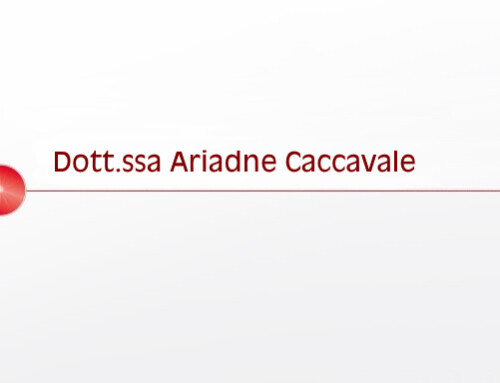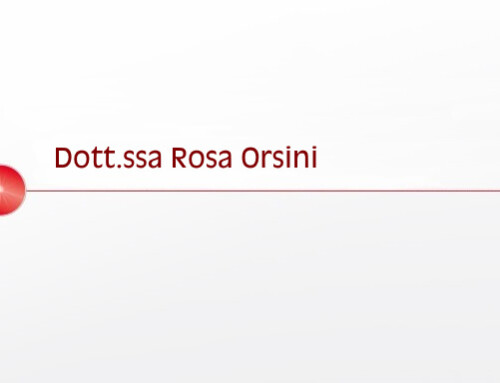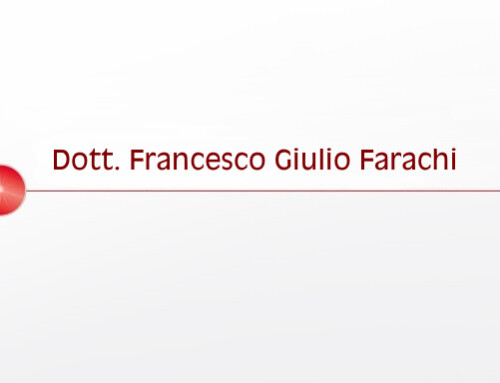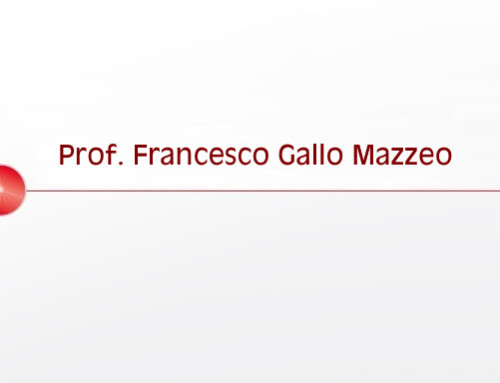
![]()
Queste cose non avvennero mai, ma sono sempre (*)
* Saturnino Secondo Salustio, Sugli Dei e il mondo, IV, 8
È facile assaporare il retrogusto di una sottile invidia davanti ai quadri di Alessandra Casciotti. Non solo per l’ovvia ragione della pittura, per quella capacità cioè dell’artista di trasporre in resa figurale e luministica senso e nozione di un personale stato d’animo, di un impulso creativo o di una suggestione. Si avverte invece da subito di venir calati in una dimensione emotiva e ideale che, sotto il velo ornato delle sue allegorie e finzioni, pure manifesta pienamente la sua sorprendente concretezza, il paradosso di una indecifrabile evidenza. E che a quel punto diventa necessario riconoscere e condividere, quasi si venisse a scoprire solo allora, davanti ai quadri, quanto essa faccia parte della vita di ognuno, quanto il suo fascino e la sua effettività siano presenti persino nella più distratta delle quotidianità. Si tratta della dimensione in cui la coscienza dell’uomo si svincola dalla piana oggettività, e pure non la ignora, ma prova a coglierne i significati profondi, quelli che la connettono all’anima e alla psiche, ai sentimenti e alle proiezioni fantastiche, alle esperienze e alla memoria, quelli che si cercano e si trovano nel colloquio intimo con sé stessi e che costantemente si confrontano con quel mistero di fisicità e spiritualità che è propriamente l’esistenza umana. Dimensione che perciò non è soltanto emotiva e ideale, non soltanto contemplativa e astratta, ma che ha anche sapori e odori, ha sguardi e incontri, sfioramenti e desideri. Invidia, dunque, nel constatare non solo la dote dell’artista di individuare con precisione tale dimensione, ma anche e soprattutto quella di restituire attraverso l’invenzione di un’immagine il valore lirico e invadente della sua universalità.
Proprio per questo, nei lavori di Alessandra Casciotti il ricorso così frequente e appassionato ai soggetti mitologici è qualcosa che va al di là di una predilezione puramente immaginativa o di modello iconografico. Il carattere simbolico e allegorico di questi soggetti, divinità ed eroi, personificazioni ed epifanie, è maturazione di un sottostante, principale, coinvolgimento umano, è la rappresentazione della centralità di una ricerca di senso e ordine, di bellezza e misura, di fronte al caos imperscrutabile dei fenomeni e delle passioni. Ricerca che non ha epoca né collocazione geografica o culturale, ricerca che è costante umana, e che nel mito trova espressione poetica e affabulatrice (scriveva il filosofo neoplatonico Salustio, “queste cose non avvennero mai, ma sono sempre”). Sebbene nelle tele della Casciotti i riferimenti, forse per affezione, esperienza, immediatezza comunicativa, siano principalmente riconducibili al mondo classico greco-romano, e ancorché la pittrice non trascuri per essi una inevitabile attenzione filologica, pure l’intento è evidentemente più ampio e generale, è quello di immaginazione e di immersione in una “atmosfera mitica”, dove tempo e spazio sono sempre quelli presenti, la vita è immanente, la vicenda umana concomitante. Tanto che a una raffigurazione tradizionale dei suoi soggetti, la Casciotti addossa una trattazione che dona loro la fisionomia della contemporaneità. Essi sono sempre meno statuari e meno remoti di quanto non si direbbe, sempre un po’ più genuini e confidenziali di quanto non richiederebbe la loro iperuranica natura. In questo possiedono però la loro verità in certo qual modo rivoluzionaria. O per lo meno a cui noi forse non siamo più abituati, noi che siamo innamorati di un’idea di spiritualità come fosse una sorta di alternativa liberatoria alla schiavitù delle pulsioni carnali e primarie e tendiamo a scindere la qualità eccellente e sublimata dell’anima da quella invece ordinaria e vile del corpo e del mondo. Ecco che la Casciotti ci fa vedere ancora la complessa completezza dell’essere, l’uomo che assomma in sé la potenza del divino e la bellezza del vivere e sentire. Ciò che poi è proprio il fascino ancestrale e perdurante del mito. È dunque lo stupore, la meraviglia, l’incanto di fronte a questa armonia del reale che lega l’immaginario al cosmo di simboli e significati che l’artista trasferisce sulla tela. Armonia che è dolce e gioiosa, profonda e meditativa, limpida e posata, proprio come il tenore cromatico e compositivo della pittura della Casciotti. Il colore regola assetto e aspetto di ogni singolo dipinto, per ogni singolo dipinto appronta una nota di dominanza, luce, carattere, accezione alla visione e al sentimento. Ma prima di tutto, il colore è sfondo assoluto, campitura tesa e uniforme in cui lo spazio comprime sé stesso fino a diventare infinito; spazio senza punti d’orientamento, senza scorci o successione di piani, per ciò stesso è spazio mentale, spazio che deve solo essere. Perché in esso abita un’idea di grazia e di bellezza. Ideale etico ed estetico coincidono, così come poi collimano nel segno e nei toni pittorici, nelle precise scansioni geometriche e architettoniche, nei riferimenti fra gli elementi figurativi e le proporzioni. La pittrice insegue fieramente, con l’istinto e con l’attenzione, non la pedanteria formale, bensì la compattezza e saldezza dell’intero impianto, insieme visivo e concettuale, dell’opera. Giacché l’armonia nella pittura, come nella vita, è una scelta di inclusione, è scegliere lo sguardo d’insieme, scegliere l’accordarsi dei colori e il distribuirsi delle forme. È insomma una disposizione d’animo, un modo di guardare alla realtà e di avvalorarne interezza e integrità.
Per questo è così latente, eppur così evidente, anche nei quadri più ideali e di concetto, quella vena di sensualità che si avverte scorrere al fondo della stesura dei pigmenti e disposizione delle figure e che ti fa percepire sempre un contatto certo e rilevante, quasi tattile e sensibile, con la tua viva essenza, con le tue relazioni e vicissitudini. Per questo, un universo siffatto, popolato di simboli segreti e divinità perdute, ti appare così vicino e prossimo ai tuoi giorni e per un attimo sembrano colmarsi i distacchi siderali fra i cieli delle idee e le bassure delle passioni e degli istinti. Per questo, quel brillio ironico e suadente, quel contrappasso di sorriso desacralizzante su cui tante volte inciampi per un titolo arguto, per un accostamento inopinato, per una posa o per una sembianza che ti sembrano incongrue o fantasiose, non ti risulta mai arbitrario né decontestualizzato, ma ti riconsegna invece la seduzione di una diversa prospettiva, quella delle infinite possibilità che si affacciano sulla soglia dell’esistente.
L’artista dà quindi al dipinto elementi concreti di costruzione fantastica, e così riconduce la pittura alla sua funzione, alla magia del vedere che travalica il dato puramente retinico e apre varchi di colori e luci e impressioni all’immaginazione, alle idee, alle emozioni; a quella dimensione dilatata e perenne che dà all’uomo la percezione di ciò che va oltre la fisica, la percezione del mistero e dell’ineffabile, forse talvolta del sovrannaturale e quindi del sacro. E così il cerchio si chiude: la pittura si fa materia di idealità, le rappresenta e raffigura, le accosta alla realtà del quotidiano, ritorna a esse come riflessione sulla loro essenza, come stimolo e generazione di nuovi significati.
Qui risiede la modernità dell’arte di Alessandra Casciotti, la sua stretta attinenza con il sentire della nostra età tanto spaventevole e mirabile. È un’arte proiettata verso un umanesimo ancora interamente da conoscere e sondare in cui il ruolo dell’intera esperienza umana e quello delle tensioni spirituali ed emotive non sono mai chiusi entro i confini di un’evocazione di maniera, ma sono pungolo, proposta, promessa per la consapevolezza di un presente e, in definitiva, di un futuro avverabili.
(*) Saturnino Secondo Salustio, Sugli Dei e il mondo, IV,8
![]()
These things never happened, but are always (*)
* Saturnino Secondo Salustio, Sugli Dei e il mondo, IV, 8
It is easy to feel the aftertaste of a subtle envy when standing in front of Alessandra Casciotti’s paintings. Not only for the obvious reason of the painting, which shows the artist’s capacity to transpose in figurative and luminous rendering sense and notion of a personal mood, a creative impulse, or a suggestion. One immediately senses being lowered into an emotional and ideal dimension that, under the veil of its allegories and fictions, fully manifests its surprising concreteness, the paradox of an indecipherable evidence. And at that point it becomes necessary to recognize and share, as if it were discovered only then, in front of the paintings, how much it is part of everybody’s life, how much its charm and its effectiveness are present even in the most distracted daily life.
This is the dimension in which the consciousness of man comes from the flat objectivity, and does not ignore it, but tries to capture its deep meanings, those that connect it to the soul and the psyche, fantastic feelings and projections, to experiences and memories, those who seek and find themselves in intimate conversation with themselves and who are constantly confronted with that mystery of physicality and spirituality that is properly human existence. This dimension, therefore, is not only emotional and ideal, not only contemplative and abstract, but also has flavors and smells, looks and encounters, touches and desires. So the feeling of envy, not only in understanding the artist’s gift to accurately locate that dimension, but also and above all to restore through the invention of an image the lyrical and invasive value of its universality.
For this very reason, in the work of Alessandra Casciotti the so frequent and enthusiastic appeal to mythological subjects is something beyond a purely imaginary or iconographic model. The symbolic and allegorical character of these subjects, divinities and heroes, personifications and epiphanies, is the maturation of an underlying, principal, human involvement, is the representation of the centrality of a search for sense and order, beauty and measure, in the face of the chaos of phenomena and passions. Research that has no age or geographic or cultural location, a search that is humanly constant, and that in the myth has found poetic and affirmative expression (the neoplatonic philosopher Salustio wrote “these things never happened but are always”).
Although in Casciotti’s paintings the references, perhaps by affection, experience, and communicative immediacy, are mainly attributable to the Greek-Roman classical world, and even though the painter does not overlook with them an inevitable philological attention, the intent is obviously wider and more general, it is to imagine and immerse in a “mythical atmosphere”, where time and space are always present, life is immanent, the human affair simultaneous. So much so that to a traditional representation of her subjects, Casciotti adds elements that gives them the physiognomy of contemporaneity. They are always less statues and less remote than one would ever say, always a little more genuine and confidential than they would be require by their hyperuranic nature. In this, however, they hold a somewhat revolutionary truth.
Or at least a truth to which we may not be used to, we who are in love with an idea of spirituality as a kind of liberating alternative to the slavery of carnal and primary drives, and we who tend to differentiate the excellent and sublimated quality of the soul from the ordinary and vile one of the body and the world. Casciotti is able to show us the complex completeness of being, man who assimilates in himself the power of the divine and the beauty of living and feeling. Which is then the ancestral and lasting fascination of myth.
It is therefore the astonishment, the wonder, the enchantment in front of this harmony of reality that binds the imaginary to the cosmos of symbols and meanings that the artist transfers to the canvas. Harmony that is sweet and joyful, deep and meditative, clear and laid, just like the chromatic and compositional tenor of Casciotti’s painting. The color rules the layout and appearance of each painting, for each single painting receives a note of dominance, light, character, sense of vision and feeling. But first of all, color is an absolute backdrop, a tense and uniform pattern in which space compresses itself until it becomes infinite; space without orientation points, without glimpses or succession of plans, is thus a mental space, space that must only be. Because there is an idea of grace and beauty in it. Ethical ideal and aesthetic coincide, as well as collimate in the sign and pictorial tones, in precise geometric and architectural scans, in the references between figurative elements and proportions.
The painter pursues fiercely, instinctively and with attention, not the formal pedantry, but the compactness and the firmness of the entire implant, both visual and conceptual, of the work. Since harmony in painting, as in life, is a choice of inclusion, it is to choose the general vision, to choose the arrangement of colors and to distribute forms. It is, in short, a disposition of mind, a way of looking at reality and of giving fullness and integrity.
That is why it is so latent, yet so obvious, even in the most ideal and conceptual paintings, that vein of sensuality that is felt to flow to the bottom of the drawing of the pigments and disposition of the figures and that always makes you perceive a certain and relevant contact, almost tactile and sensitive, with your living essence, with your relationships and vicissitudes. For this reason, such a universe, populated with secret symbols and lost gods, looks so close and close to your days, and for a moment seem to be the sideways gap between the skies of ideas and the lowness of passions and instincts. For this reason, that ironic and humorous shade, that desacralizing smile contraction on which you often stumble when reading a sharp title, for an unprecedented approach, for a pose or a resemblance that seems inconsistent or fanciful, never turns out to be arbitrary or decontestualized, but instead gives you the seduction of a different perspective, that of the infinite possibilities that face the threshold of the existent.
The artist then gives the paintings concrete elements of fantastic construction, and so brings the painting to its function, the magic of seeing that traverses the purely retinical figure and opens up a range of colors and lights and impressions to imagination, ideas, emotions; to that dilated and perennial dimension that gives man the perception of what goes beyond physics, the perception of the mystery and the ineffable, perhaps sometimes supernatural and hence the sacred. And so the circle closes: painting becomes matter of ideality, represents and depicts it, brings it to the reality of everyday life, returns to them as reflection on their essence, as stimulus and generation of new meanings.
Here lies the modernity of Alessandra Casciotti’s art, its close attachment to the feeling of our age so frightening and admirable. It is an art projected towards a humanism that is still entirely to be known and felt in which the role of the whole human experience and that of the spiritual and emotional tensions are never closed within the boundaries of a manner of evocation, but are pungent, proposed, promise for the awareness of a present and, ultimately, of a future that can be achieved.





